39 food labels contain what type of information
What's on the Nutrition Facts Label | UNL Food A Nutrition Facts label lists the nutritional content, the serving size, and the calories for a recommended serving of a food product. This helps consumers make the best decision on how much to eat, maybe when they want to eat this food, or how they can better balance their food choices throughout the day. In addition to the Nutrition Facts ... What Food Labels Mean—and Don't - Consumer Reports Natural: A 2015 nationally representative Consumer Reports survey found that 62 percent of consumers seek out foods with the "natural" label, and roughly as many of them think this term means no...
Food Labels -- Nutrition information and misinformation (Page 1 of 3) How to Read Food Labels. Food packages generally have two types of consumer information required by the Food and Drug Administration (FDA). The Nutrition Facts section defines a serving size and describes the weights of macronutrients (fat, carbohydrate, protein) in a serving and the percentages that these macronutrients represent of the daily Recommended Dietary Allowance (RDA) for a 2000 ...

Food labels contain what type of information
7 Presentation of Nutrition Information on Food Labels - NCBI Bookshelf This information must be provided as part of full nutrition labeling (21 CFR § 101.9). If the food is represented for special dietary use for low salt or low sodium intake, then either full nutrition labeling or only the number of milligrams of sodium per portion needs to be provided (21 CFR §§ 105.69, 101.13 (b) (5)). Understanding Food Labels - Nutrition: Science and Everyday Application ... The 5 required types of information on a food label. ... as on the corn muffin mix label, which lists "Contains: Wheat" on the label. Alternatively, allergens can be listed in parentheses within the ingredient list, such as "lecithin (soy)." Some labels include an optional "may contain" or "made in shared equipment with ... Food labels - NHS These labels provide information on the number of grams of fat, saturated fat, sugars and salt, and the amount of energy (in kJ and kcal) in a serving or portion of the food. But be aware that the manufacturer's idea of a portion may be different from yours. Some front-of-pack nutrition labels also provide information about reference intakes.
Food labels contain what type of information. Understanding Ingredients on Food Labels - American Heart Association Understanding Ingredients on Food Labels. Food labels are an important source of information about calories and the nutritional value of the foods you eat, a crucial tool in building a heart-healthy diet. The Nutrition Facts information is always displayed in the same orderly fashion and helps you understand how much of certain nutrients that ... How To Read Food and Beverage Labels - National Institute on Aging In many countries, including the United States, packaged foods and drinks — the types that come in cans, boxes, bottles, jars, and bags — include nutrition and ingredient information on their labels. However, sometimes these labels can be misleading and difficult to decipher. Chapter 5: Food Labels Flashcards | Quizlet What are the eight common allergens that have to be listed on food labels? 1) milk 2) eggs 3) fish 4) shellfish 5) tree nuts (cashews, walnuts, almonds, etc.) 6) peanuts 7) wheat 8) soybeans What are the three main reasons that food labels are so important? 1) They tell you what's inside the package Food Labels | Nutrition.gov Food Labels Food labels can help you make healthy choices when buying food in grocery stores or restaurants. Labeling Organic Products USDA, Agricultural Marketing Service, National Organic Program Learn about organic foods, requirements, and how they are labeled. Calories on the Menu HHS, Food and Drug Administration
How to Understand and Use the Nutrition Facts Label | FDA - U.S. Food ... Dietary fiber, vitamin D, calcium, iron ad potassium are nutrients on the label that Americans generally do not get the recommended amount of. They are identified as nutrients to get more of.... What is required on a food label? - USDA A meat and poultry label is required to contain 8 features. These are: the product name, inspection legend and est. number, handling statement, net weight statement, ingredients statement, address line, nutrition facts, and safe handling instructions. These requirements are found in the Code of Federal Regulations (9CFR 317.2/381 Subpart N). Food Package Labeling - an overview | ScienceDirect Topics There are 12 mandatory pieces of information that must be present on all European Union (EU) food labels: product name, list of ingredients, allergens, quantitative ingredient declaration, net quantity, durability dates, storage, instructions for use, business name and address, country of origin, nutritional declaration, and alcoholic strength. Food labels - Better Health Channel Food labels carry useful information to help you make informed choices about what you and your family eat and drink. Most packaged foods are required to have a label with this information, but the information required depends on the food type. The food label will tell you all sorts of information, including: what the food is manufacturer's details
Food labelling: giving food information to consumers - GOV.UK Your labelling must allow the customer to see all the following information at the same time (it must be in the same field of vision): the name of the food the net quantity of the food alcoholic... Food labels quiz Flashcards | Quizlet along with information about specific nutrients, food labels make other types of claims about nutritional value. free The food contains none, or an insignificant amount, of a given component: fat, sugar, saturated fat, trans fat, cholesterol, sodium, or calories. *Fewer than 5 calories per serving. Food Labels Explained - Farm Aid Organic labels can be found on produce, dairy, meat, processed foods, condiments and beverages. Food products labeled "organic" must contain at least 95% organic ingredients with no synthetic growth hormones, antibiotics, pesticides, biotechnology, synthetic ingredients or irradiation used in production or processing. Understanding Nutrition Facts on Food Labels - WebMD Serving Size: An Important Part of Food Labels. At the top of the Nutrition Facts section, you'll see the serving size (such as 1/2 cup, five crackers, or 10 chips) and servings per container (such as two, four, six). The food label then lists the number of calories, grams of fat, grams of saturated and trans fat, etc., per serving.
Food Labels | CDC - Centers for Disease Control and Prevention If you eat the whole thing, you are eating 8 times the amount of calories, carbs, fat, etc., shown on the label. Total Carbohydrate shows you types of carbs in the food, including sugar and fiber. Choose foods with more fiber, vitamins, and minerals. Choose foods with lower calories, saturated fat, sodium, and added sugars. Avoid trans fat.
Key Elements of a Food Label To Know | Food Labeling Info Below is a list of information that should be on your product's Principal Display Panel (the area most likely to be seen by consumers) in order to comply with labeling regulations: Food ingredients Minerals Caloric value Typical serving size
Food Labeling & Nutrition | FDA Food labeling is required for most prepared foods, such as breads, cereals, canned and frozen foods, snacks, desserts, drinks, etc. Nutrition labeling for raw produce (fruits and vegetables) and...
How to Read Food Labels Without Being Tricked - Healthline The product may contain very little whole grains. Check the ingredients list — if whole grains aren't in the first three ingredients, the amount is negligible. Fortified or enriched. This ...
Reading Food Labels (for Parents) - Nemours KidsHealth Percent daily value is most useful for seeing whether a food is high or low in nutrients: A food with 5% or less of a nutrient is low in that nutrient. A food with 10%-19% of a nutrient is a good source of that nutrient. A food with 20% or more of a nutrient is high in that nutrient. The information on food labels is based on an average diet ...
How to Read Food Labels: Your Complete Consumer Guide Details included on food labels are the nutritional composition of a food, as well as ingredients and their relative amounts. When relevant, they may also indicate important details about the food's quality, origin, processing, and method of preservation. With this information, the theory goes, you can make intentional decisions about what to buy.
Food labelling - Food and nutrition | NHS inform Under EU Regulations, food labels should give you information about the food inside the packaging, shelf life and storage instructions to help you make informed decisions about the foods you buy. Food labels should also show an ingredients list with the most common allergens clearly emphasised so they stand out from the other ingredients.
Understanding Food Labels - The Nutrition Source The information on food labels is intended to help consumers become savvy about their food choices. The front, back, and sides of a package are filled with information to inform us what the food contains and to provide guidance in making healthier selections of processed foods.
FDA Food Product Labeling & Packaging Requirements - ESHA The Nutrition Facts Label is used to communicate important information about the food consumers eat. The FDA also governs what label format to use on your product based on package size and contents. The Nutrition Facts Label must show: Serving size ( Consult the RACC to determine this) Household measure/common household unit Servings per container
36 Food Labels You Should Know | News - Specialty Food Association The official packaging symbol of the Whole Grains Council, which aims to help consumers identify authentic whole-grain foods. There are two versions of this label: The 100% Whole Grain stamp denotes that the food contains a full serving (16 grams) or more of whole grains per labeled serving.
Food labels - NHS These labels provide information on the number of grams of fat, saturated fat, sugars and salt, and the amount of energy (in kJ and kcal) in a serving or portion of the food. But be aware that the manufacturer's idea of a portion may be different from yours. Some front-of-pack nutrition labels also provide information about reference intakes.
Understanding Food Labels - Nutrition: Science and Everyday Application ... The 5 required types of information on a food label. ... as on the corn muffin mix label, which lists "Contains: Wheat" on the label. Alternatively, allergens can be listed in parentheses within the ingredient list, such as "lecithin (soy)." Some labels include an optional "may contain" or "made in shared equipment with ...
7 Presentation of Nutrition Information on Food Labels - NCBI Bookshelf This information must be provided as part of full nutrition labeling (21 CFR § 101.9). If the food is represented for special dietary use for low salt or low sodium intake, then either full nutrition labeling or only the number of milligrams of sodium per portion needs to be provided (21 CFR §§ 105.69, 101.13 (b) (5)).


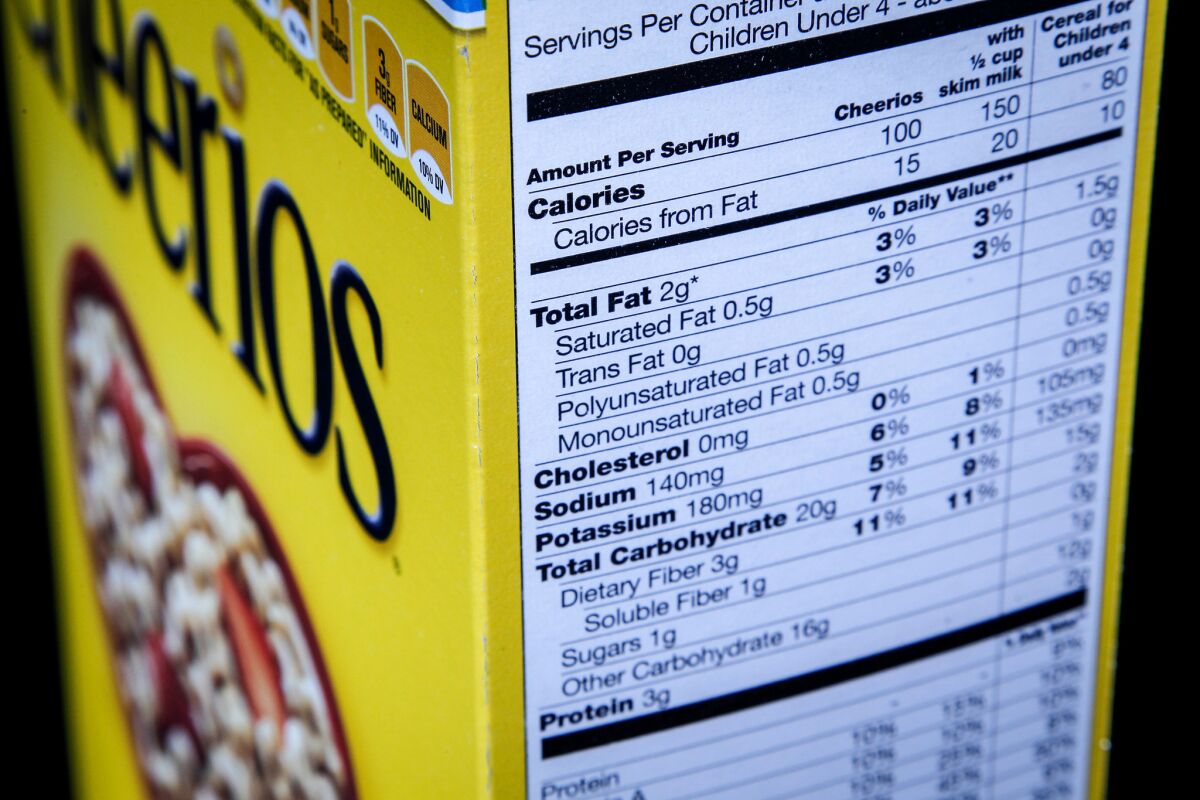
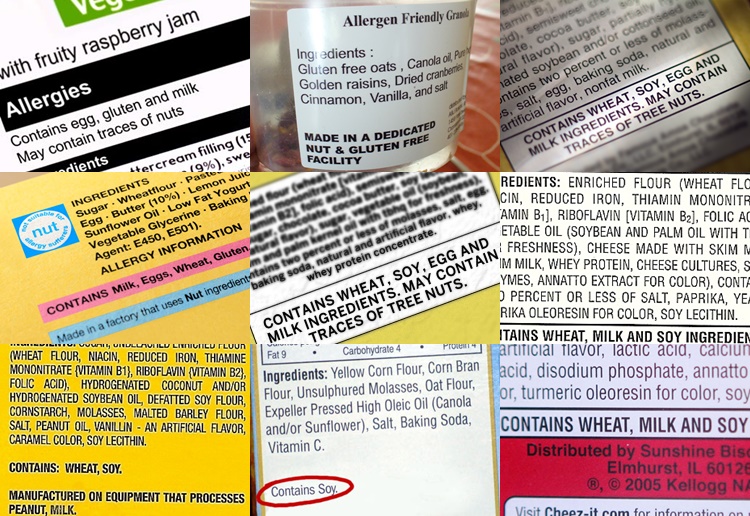

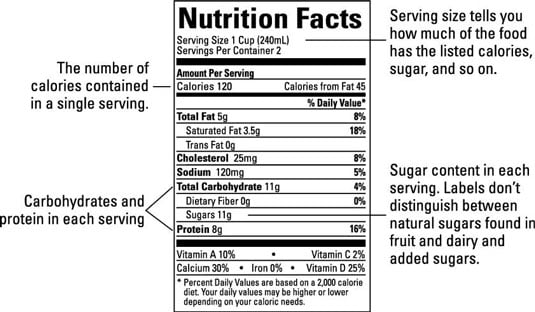




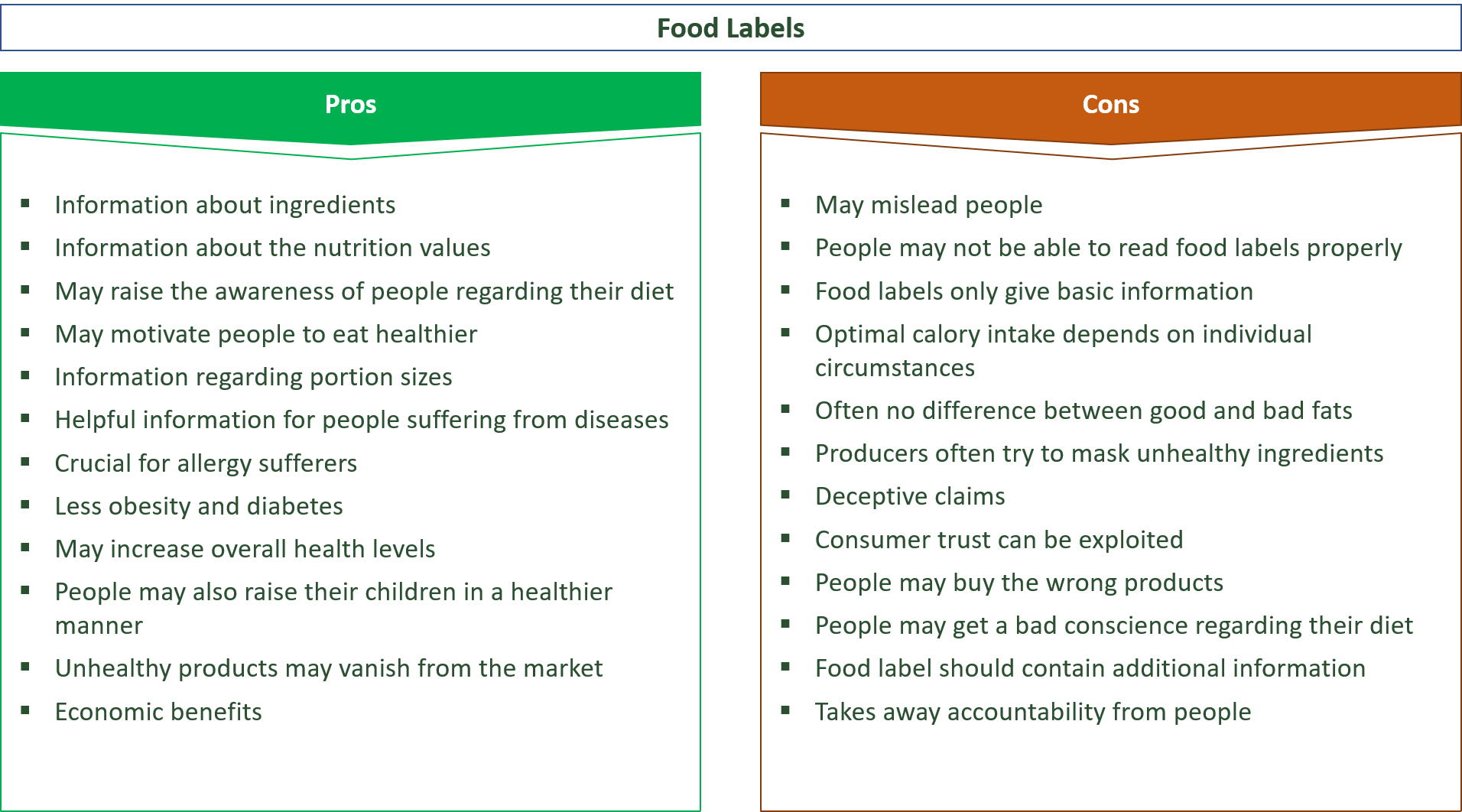

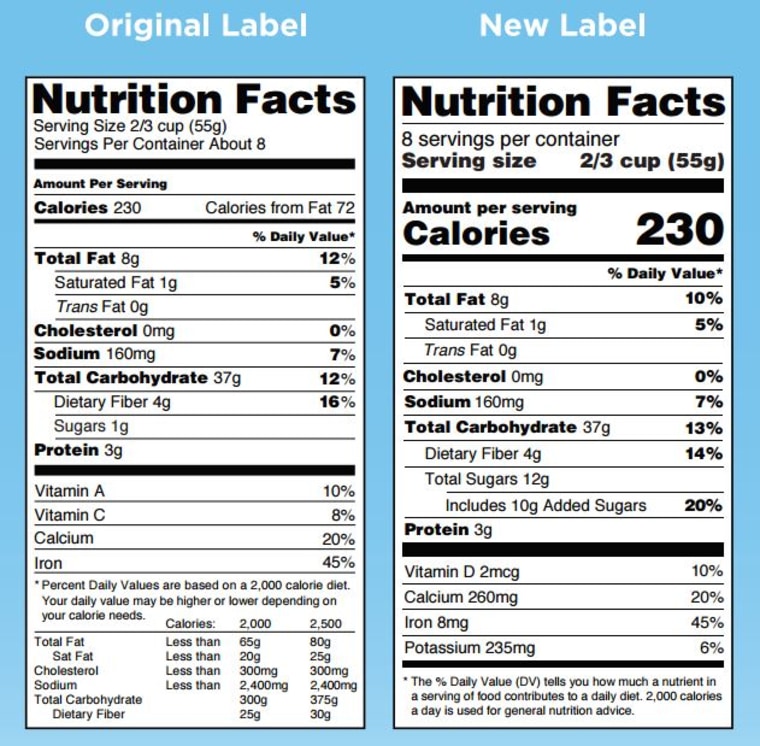



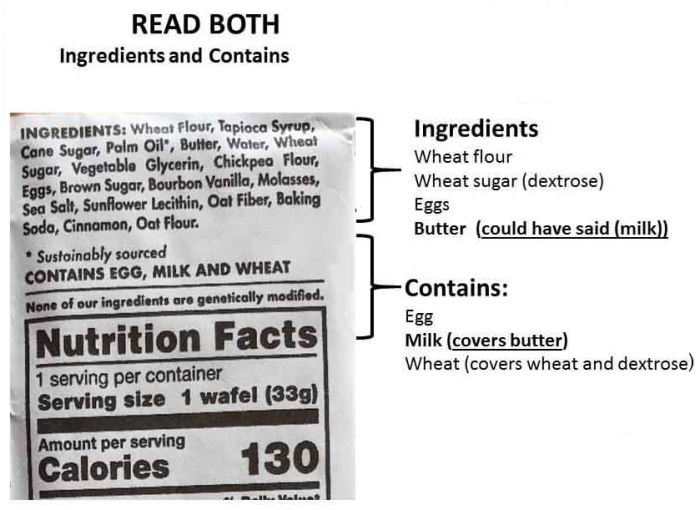




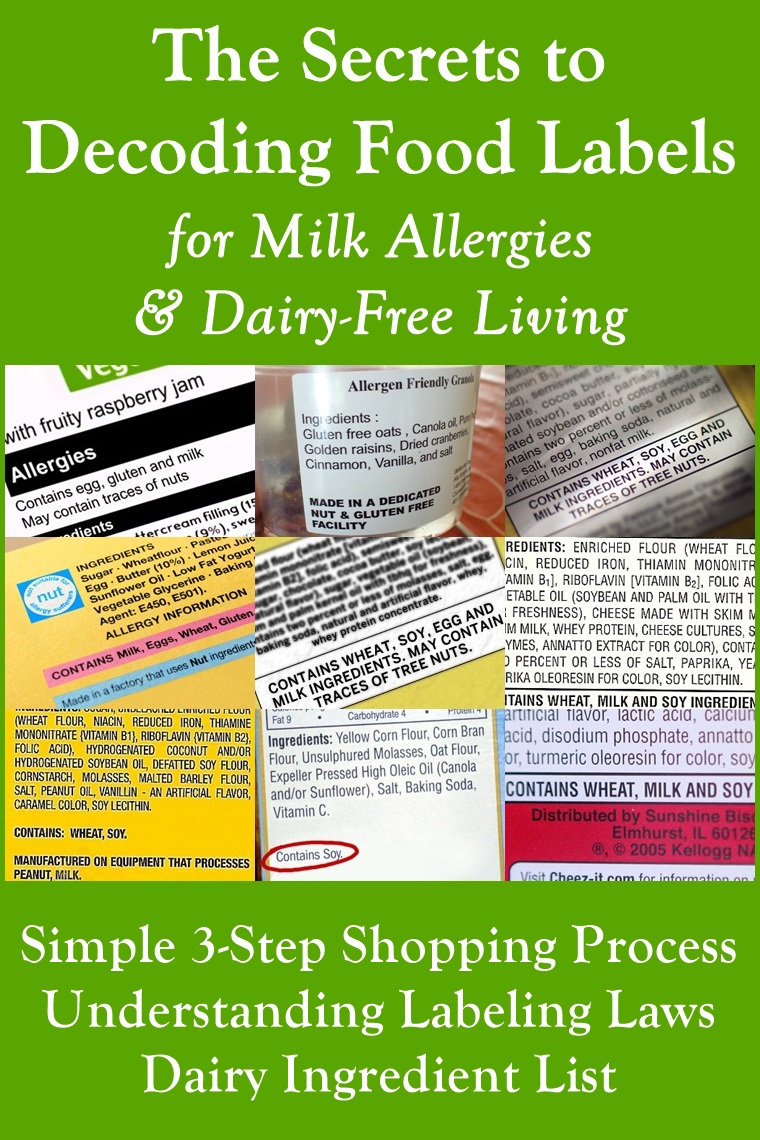
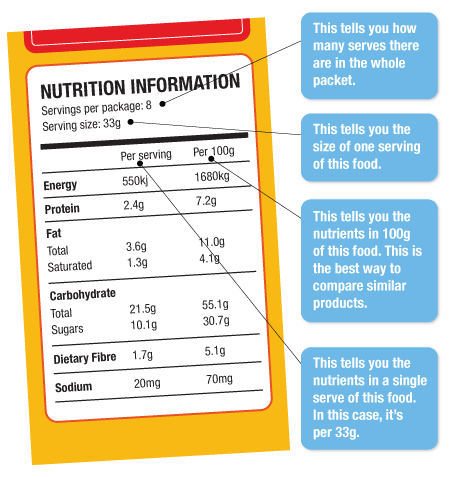
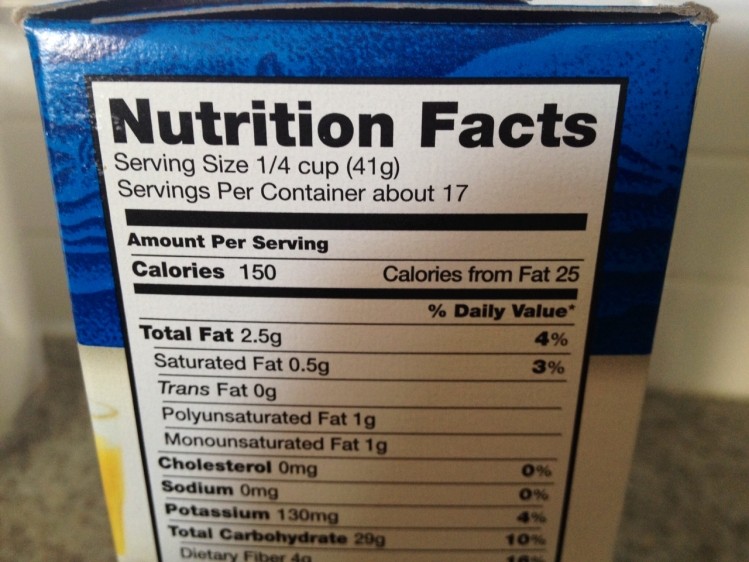


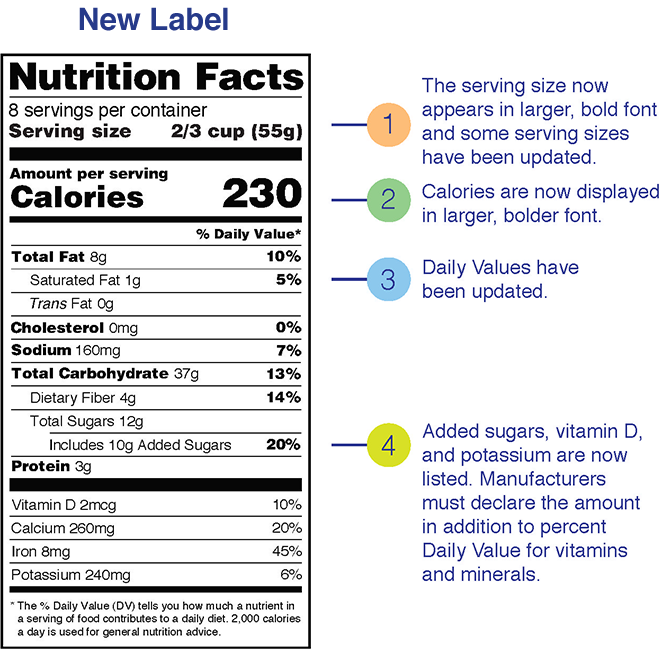

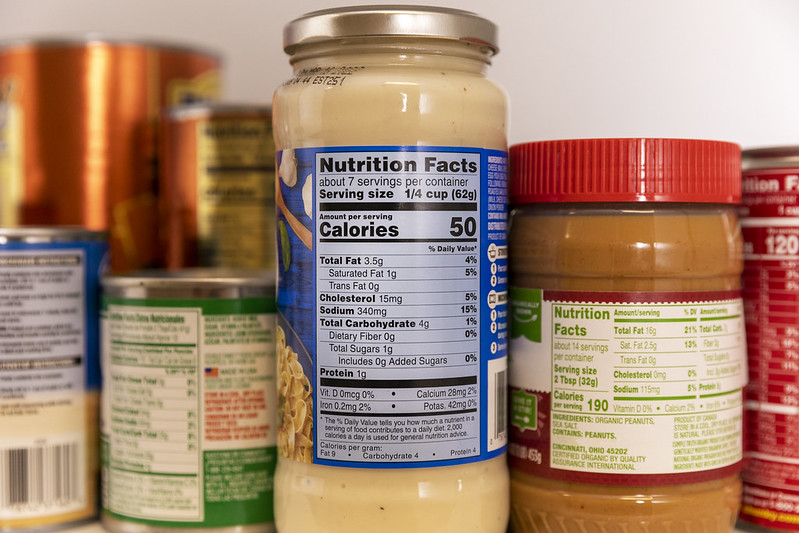


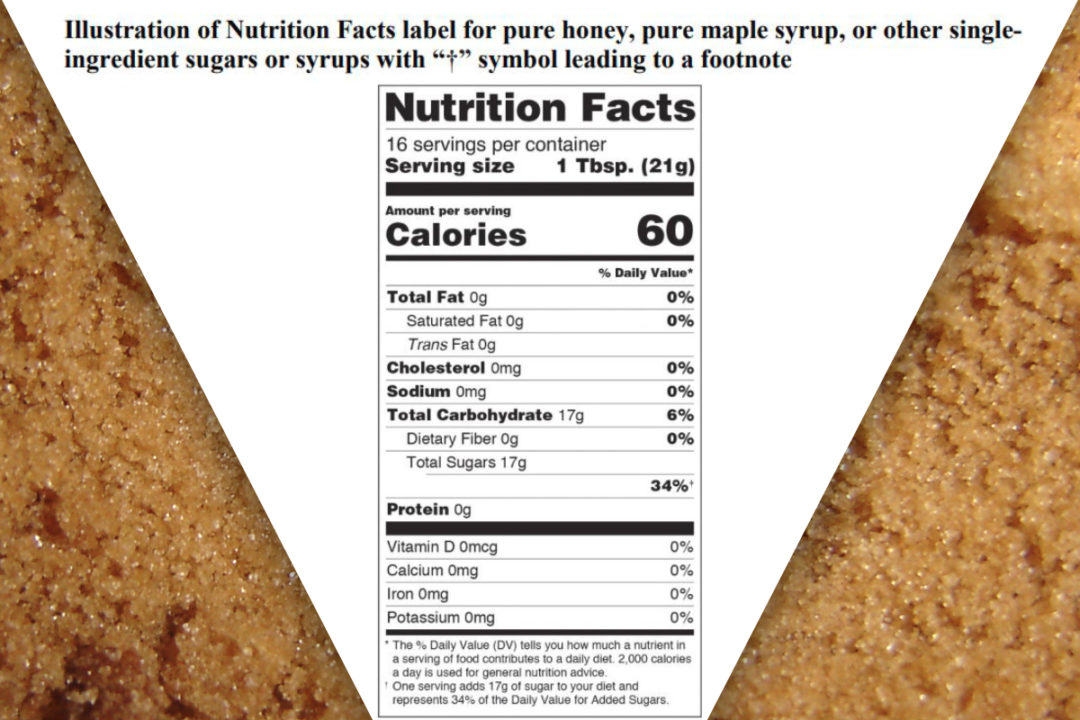
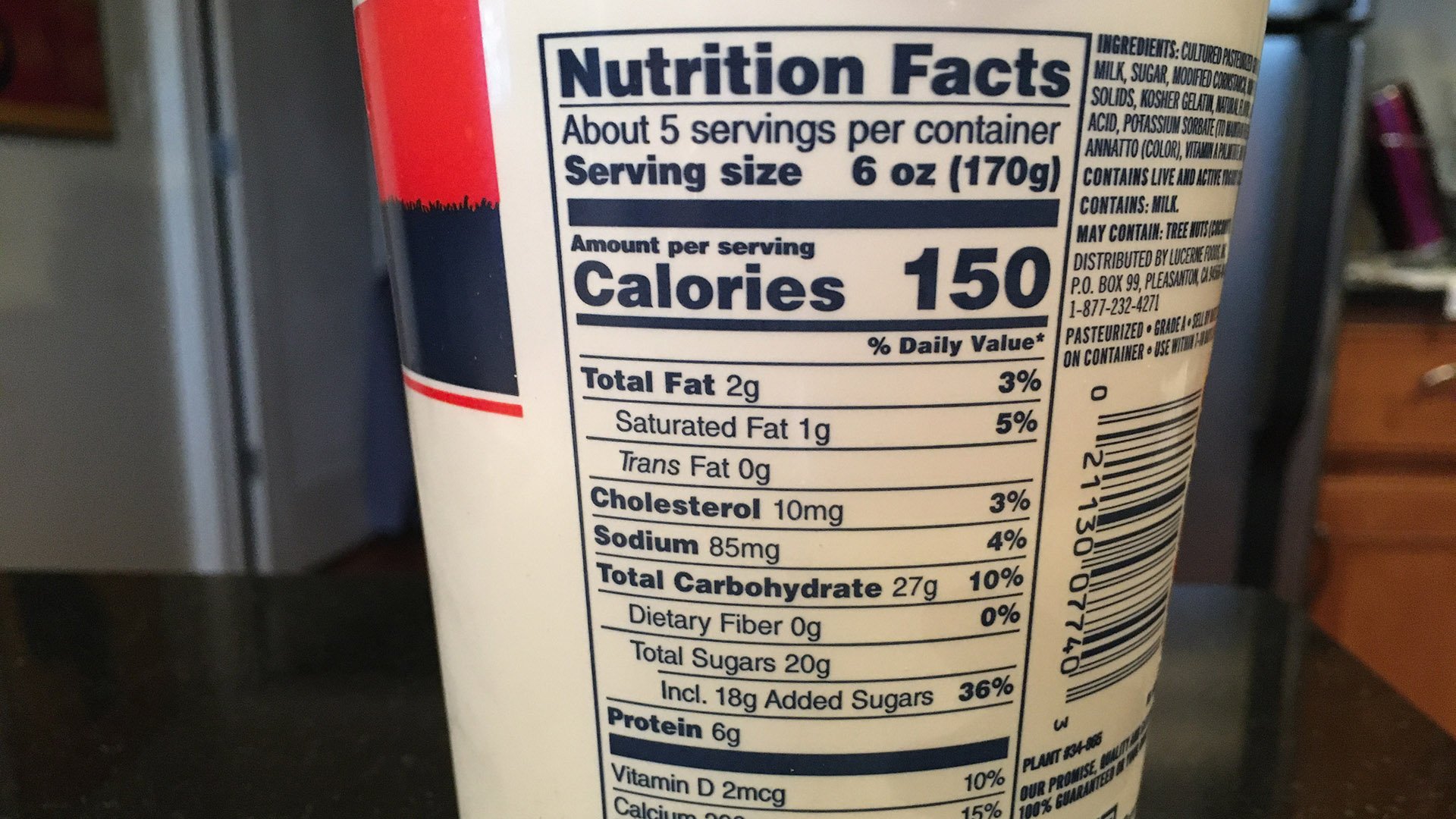

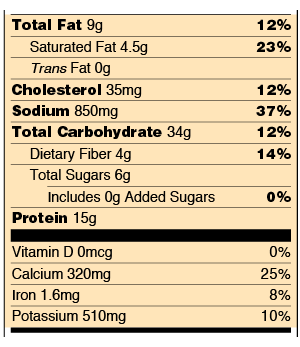
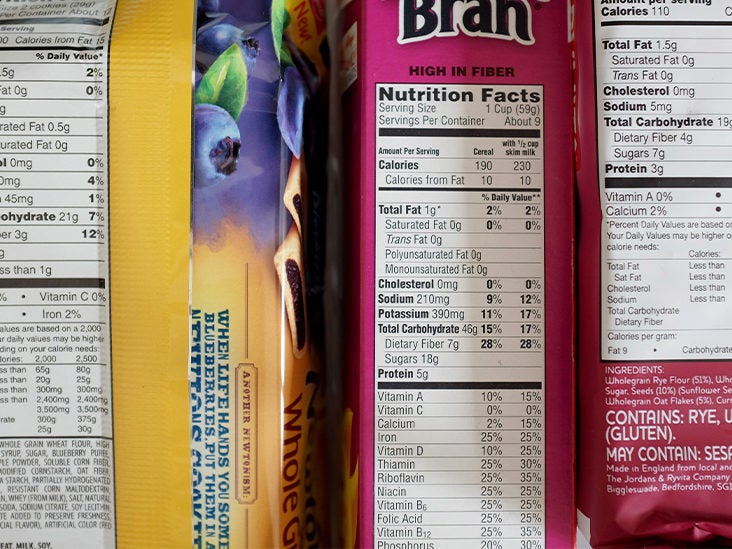
Post a Comment for "39 food labels contain what type of information"